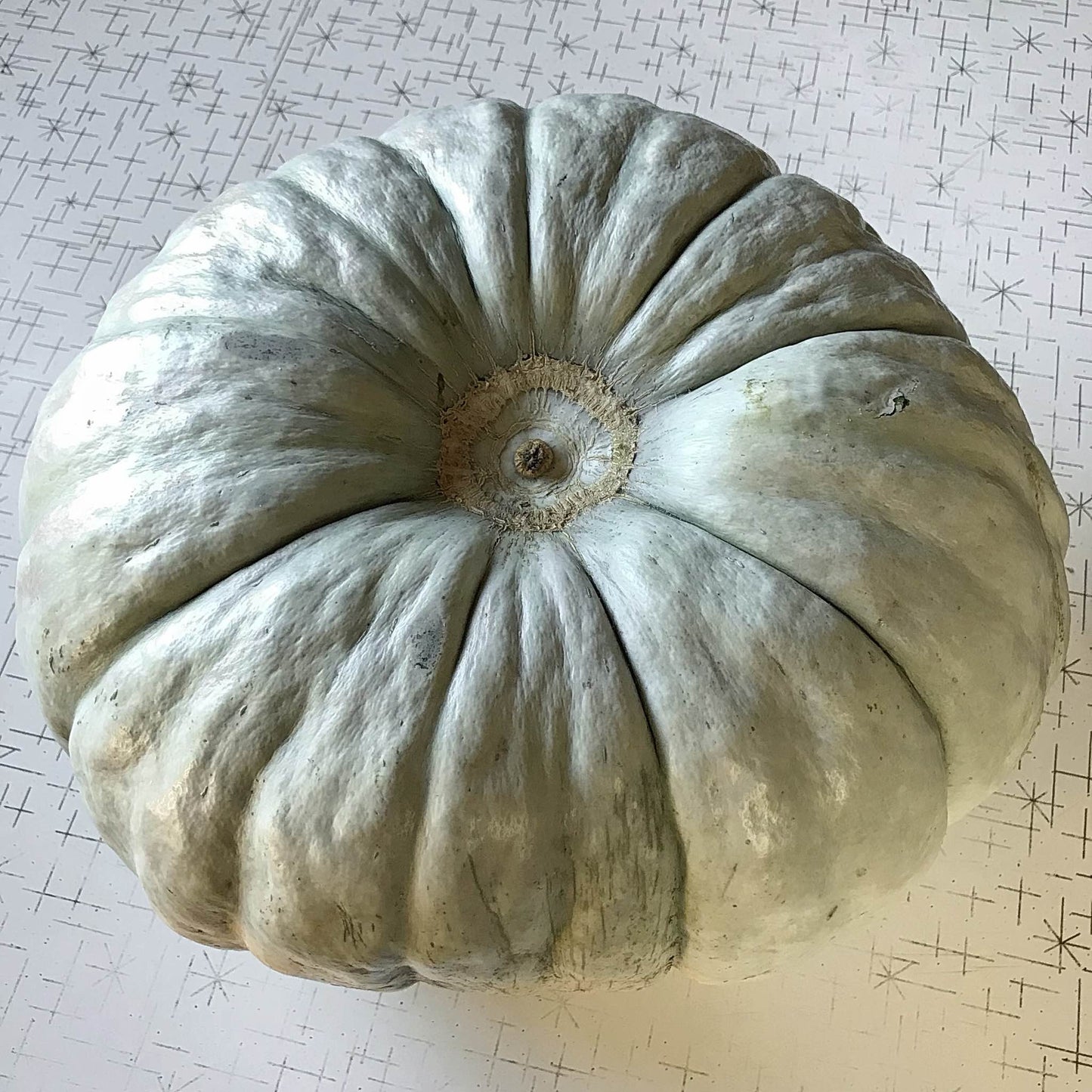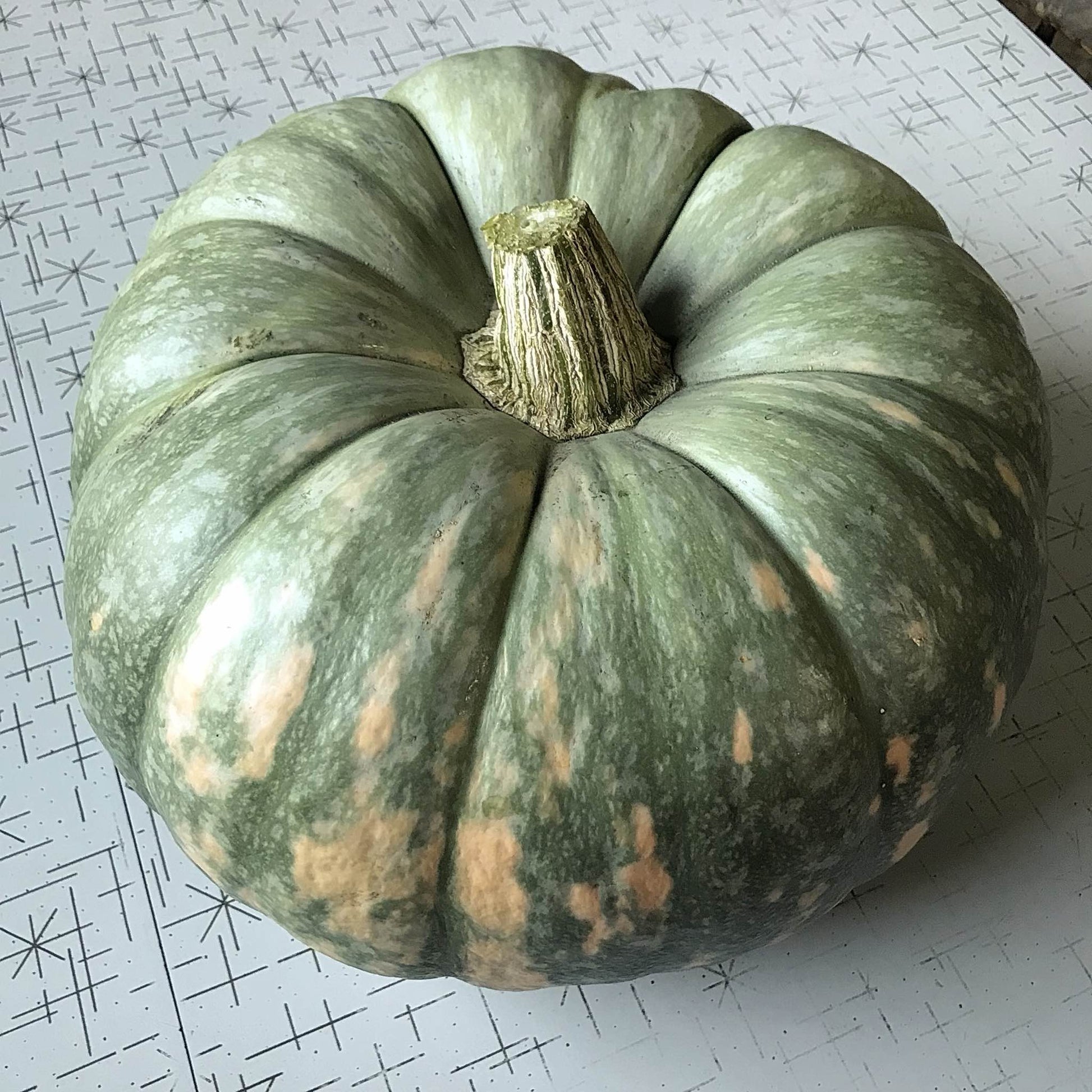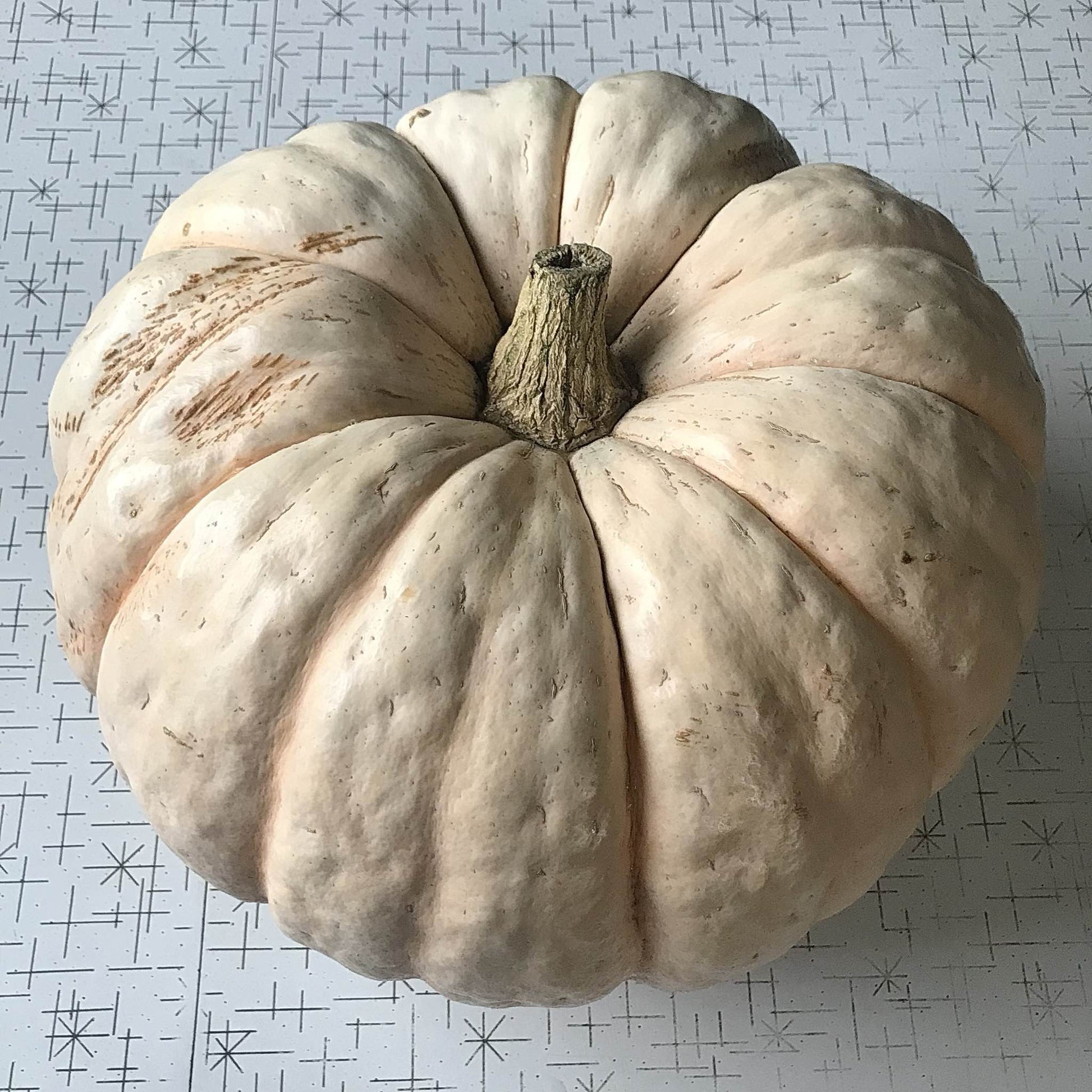Squash - Plastunovskaja 28
Squash - Plastunovskaja 28
Couldn't load pickup availability
Cucurbita maxima
90-100 Days
Very large pumpkin-shaped winter squash, averaging about 30lbs, with 40lb fruits not uncommon! Plastunovskaja has dense, dry flesh that is not too sweet, lending itself well to savoury applications. The plants are massive, with vines that can easily exceed 15 feet in length. Colours range from a very light grey-green, to a mottled green with peachy salmon patches. As the fruits age the salmon colour takes over, with the lighter fruits becoming more of a dusty peach, and the darker ones a full-fledged coral colour.
Some of my favourite seed companies obtain and trial material that is maintained by gene banks in order to bring back old and forgotten varieties that have disappeared from the seed trade, or to find "new" material for breeding projects. I've always been inspired by this approach, so in 2023 I obtained samples of all the maxima and moschata squash listed by PGRC to use in my ongoing winter squash trials. They only had two varieties of each species, so I tried them all, and hand-pollinated each growout to ensure purity. Plastunovskaja did really well, but many of my pollination tags either disintegrated or got chewed off by critters, so the useable seed harvest was less than expected. Supply is limited this year!
Unfortunately I have yet to find any specific info about this variety, so cannot regale you with an interesting backstory - I'll have to let the squash do the talking! Plastunovskaja is a small town in southwest Russia, so it may have origins in that area.
Note: sometimes the English version of words that use the Cyrillic alphabet use a "j" to indicate a "y" sound - the correct pronunciation of Plastunovskaja (Пластуновская) is "Plastunovskaya".
Our original stockseed was obtained from Plant Gene Resources Canada, accession CN 30487. It was donated in 1979 by the Vavilov Institute in St. Petersburg, Russia.




















